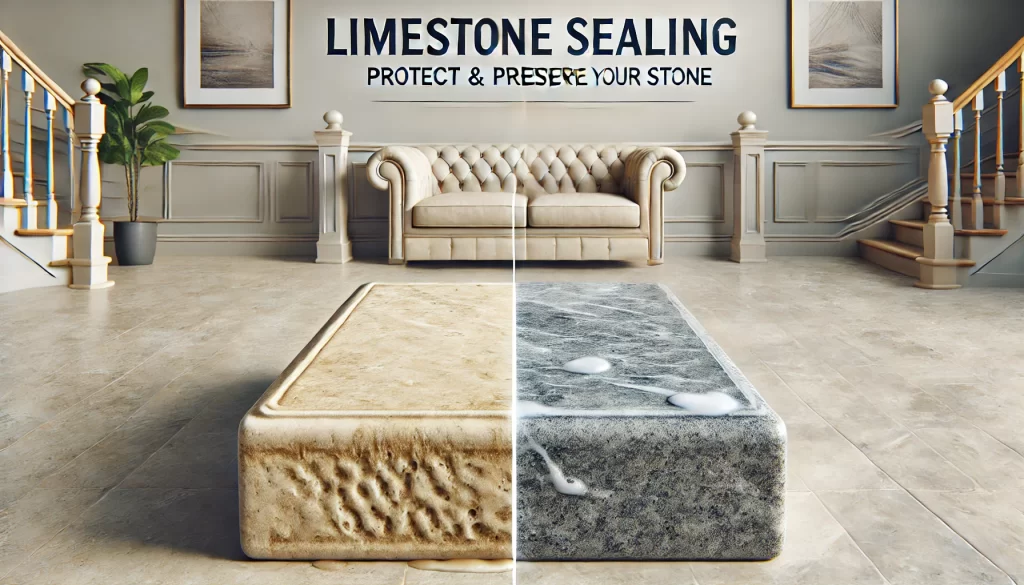
Limestone Sealing Explained: Why It Matters & How to Do It?
Limestone Sealing – Truworth Stone Care
Understanding Limestone
Limestone is a highly versatile and popular natural stone used for both indoor and outdoor applications. From bathroom floors, walls, patios, and decorative monuments, its aesthetic appeal and ease of maintenance make it a preferred choice. However, limestone is a highly porous material, making it prone to staining, water damage, and dirt accumulation. To protect its beauty and durability, proper limestone sealing is essential.
At Truworth Stone Care, we offer specialized limestone sealing solutions tailored to different limestone types and porosity levels. Before diving into the best sealing techniques, it is crucial to understand limestone’s properties and the importance of regular maintenance.
Why Limestone Sealing Is Important
Limestone, like marble, is a calcium carbonate-based sedimentary rock. Due to its porous nature, it absorbs moisture, oils, and dirt quickly, which can cause permanent staining and deterioration. Proper limestone sealing helps prevent damage, maintains its natural texture and color, and prolongs its lifespan.
Best Practices for Limestone Sealing
1. Surface Preparation
Before sealing, it is essential to properly clean the limestone surface using professional cleaning agents. Any existing stains must be treated and removed, and surfaces with etch marks or scratches may require re-honing. Once cleaned, allow at least 24 hours for the surface to dry completely before applying a sealer.
2. Choosing the Right Sealer
Selecting the right limestone sealer is crucial for effective protection. We recommend using a premium penetrating sealer like Lithofin MN Stain-Stop, which offers long-lasting protection against stains and moisture. Depending on your limestone type and its porosity, different sealing solutions may be required.
3. Application Methods
At Truworth Stone Care, we use different sealing application methods based on the size and type of the surface:
- Microfiber cloths – Ideal for sealing small areas like vanities and countertops.
- Lambswool applicators – Best for larger surfaces such as limestone floors and wall tiles.
- Microfiber rollers – Used for even application over wide floor areas.
Applying the right amount of sealer is key to achieving long-lasting protection without over-saturating the surface.
4. Regular Re-Sealing
Limestone sealing is not a one-time task. Regular re-sealing ensures continued protection, especially in high-traffic areas like bathrooms, kitchens, and outdoor patios. The frequency of re-sealing depends on factors like exposure to moisture and foot traffic. For expert guidance, consult our Truworth Stone Care professionals.
5. Proper Maintenance
After sealing, it is vital to adopt a proper maintenance routine to enhance the longevity of the limestone surface. Follow these key tips:
- Use pH-neutral cleaners specifically designed for limestone.
- Avoid acidic substances like vinegar or lemon juice, which can damage limestone and require professional restoration.
- Do not use abrasive tools such as scouring pads or steel wool, as they can scratch the surface.
- Wipe spills immediately to prevent stains from setting in.
Protect Your Limestone with Truworth Stone Care
By following the right limestone sealing and maintenance practices, you can keep your limestone surfaces looking pristine for years to come. Regular sealing not only enhances durability and longevity but also prevents costly restoration.
At Truworth Stone Care, we provide expert limestone sealing, stain removal, and stone care solutions to keep your surfaces in top condition. Contact us today for professional limestone sealing services and protect the elegance of your stone surfaces!
